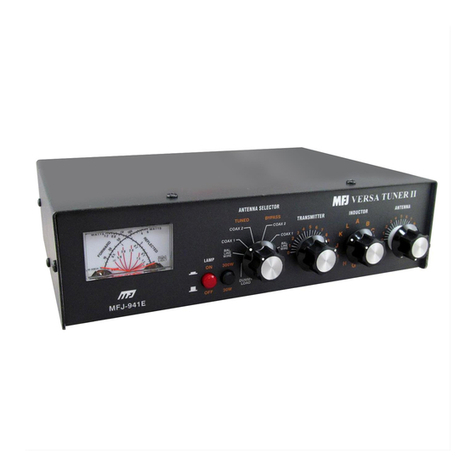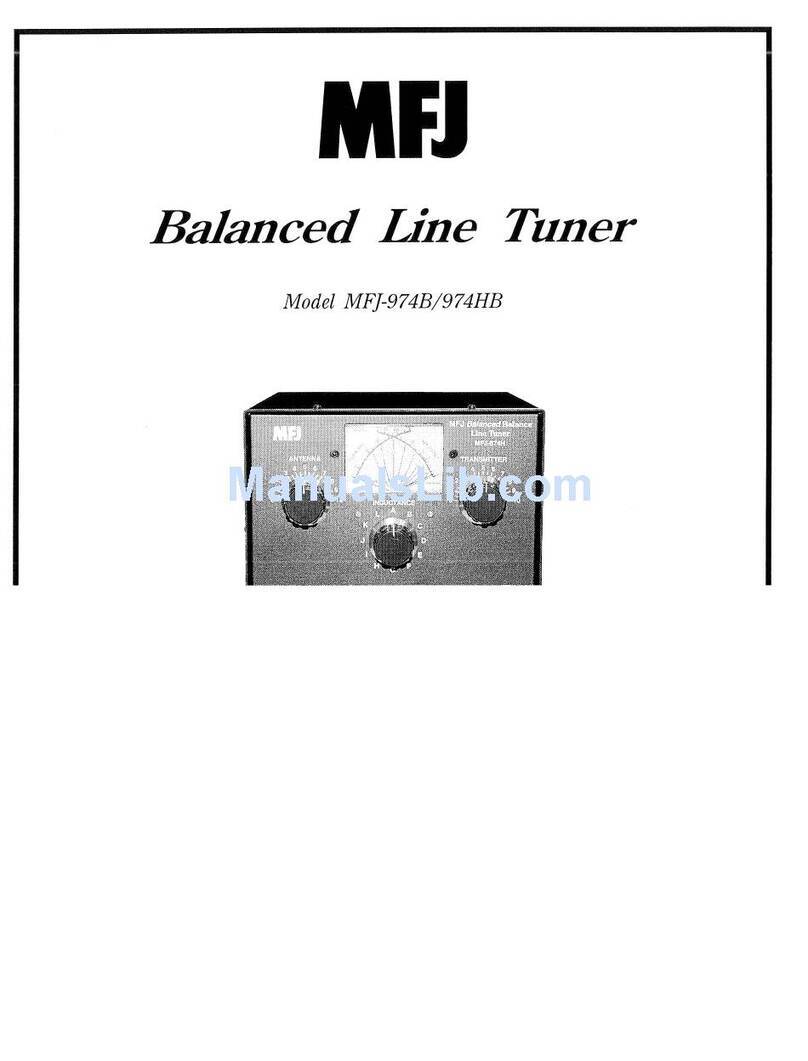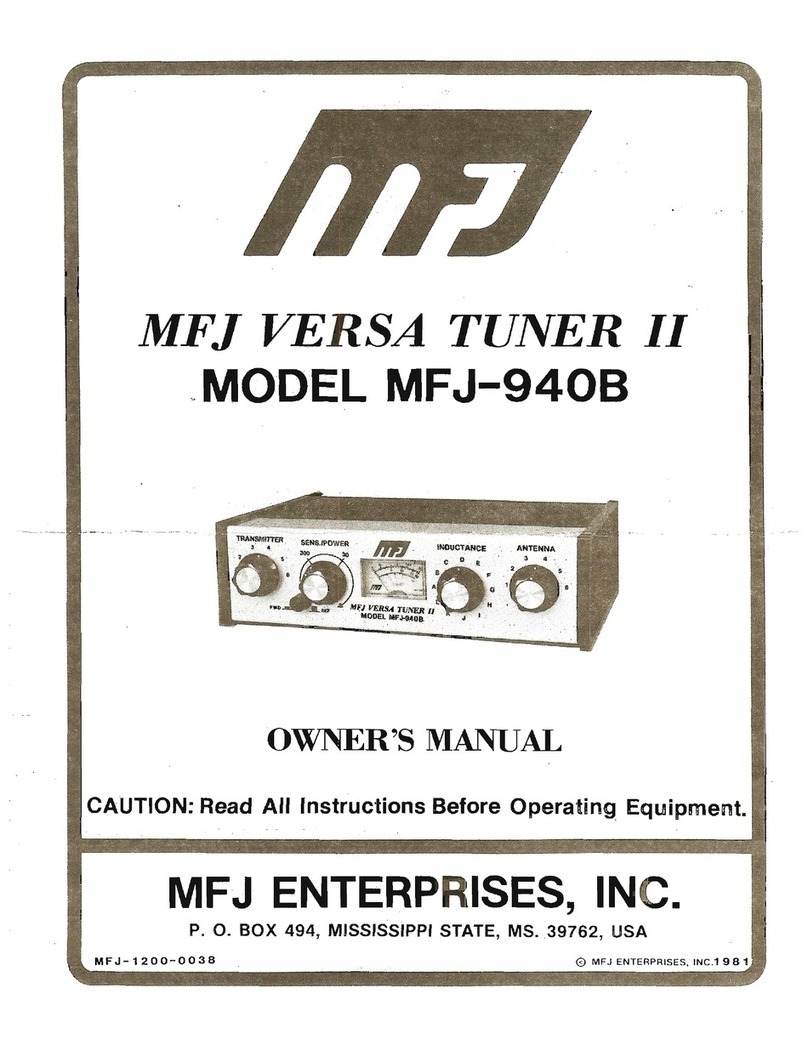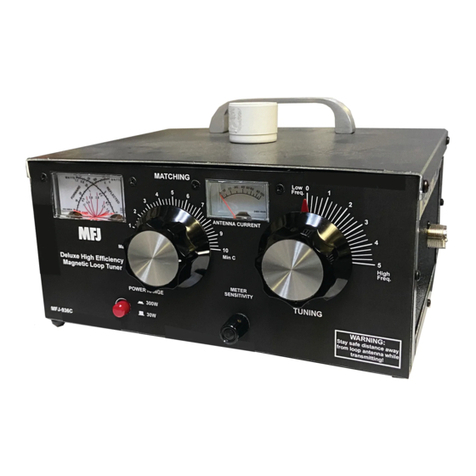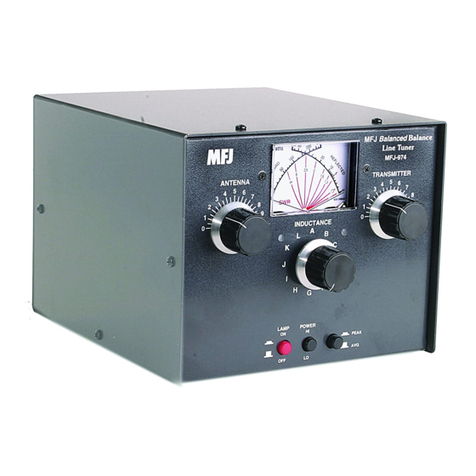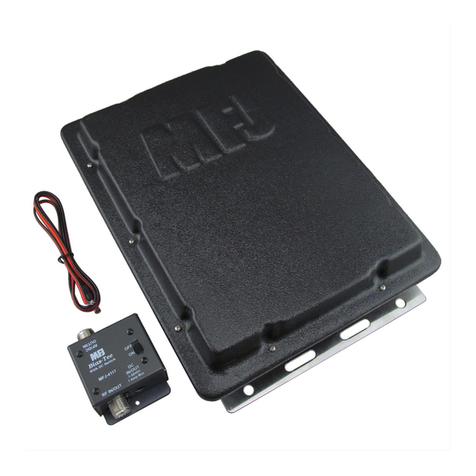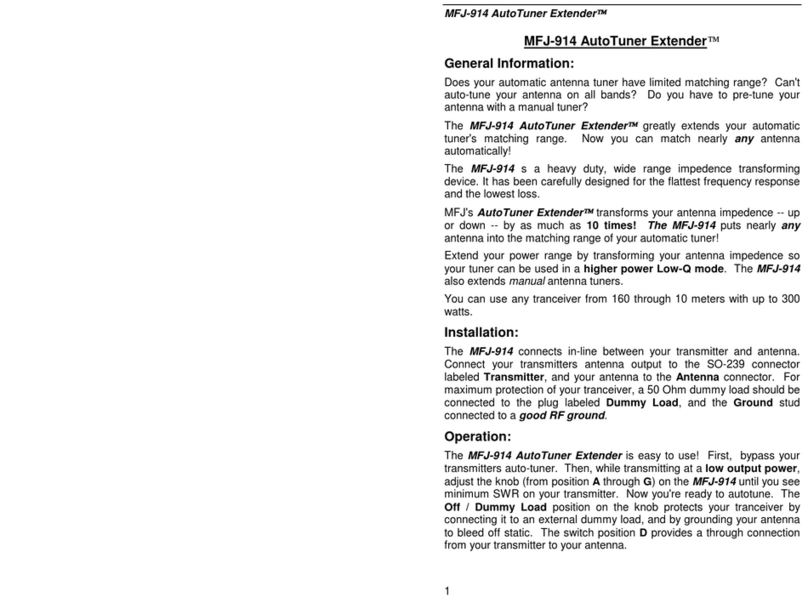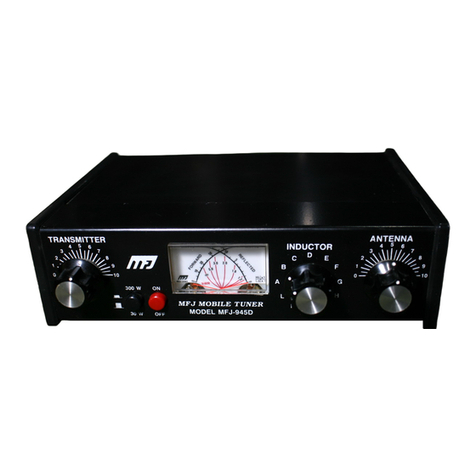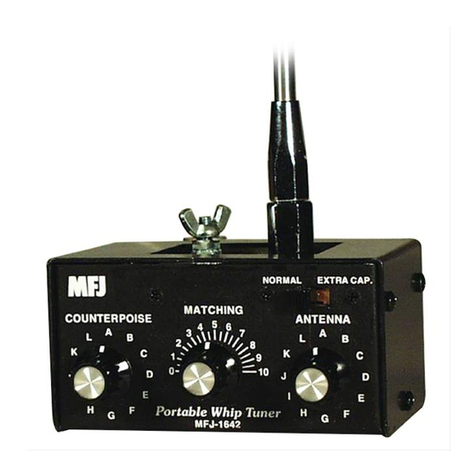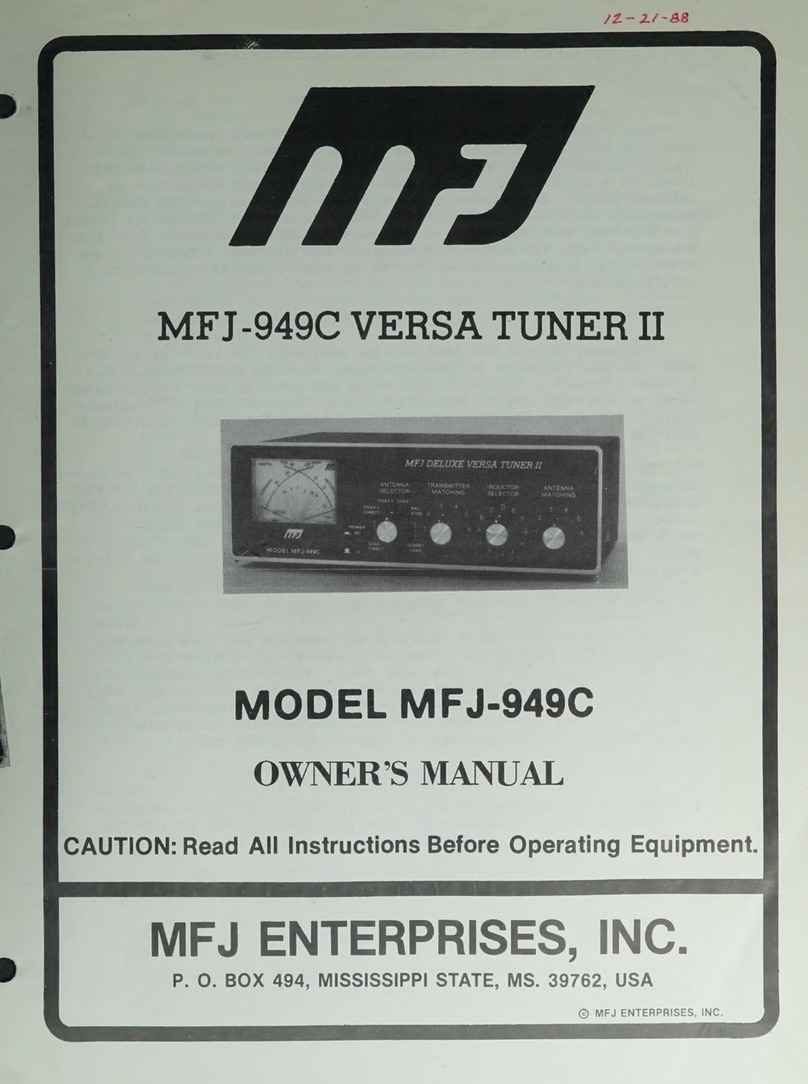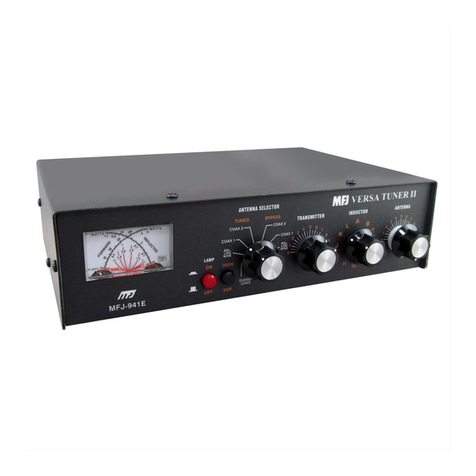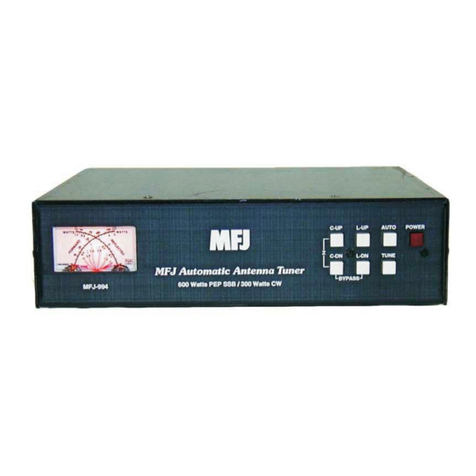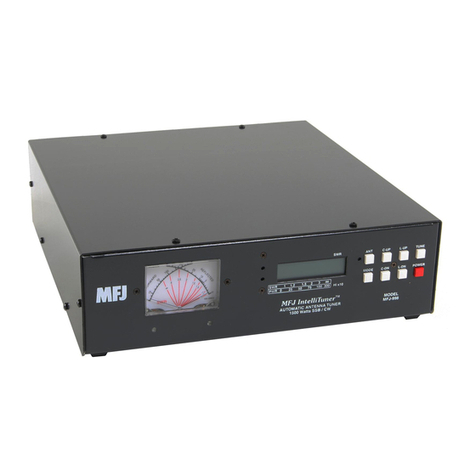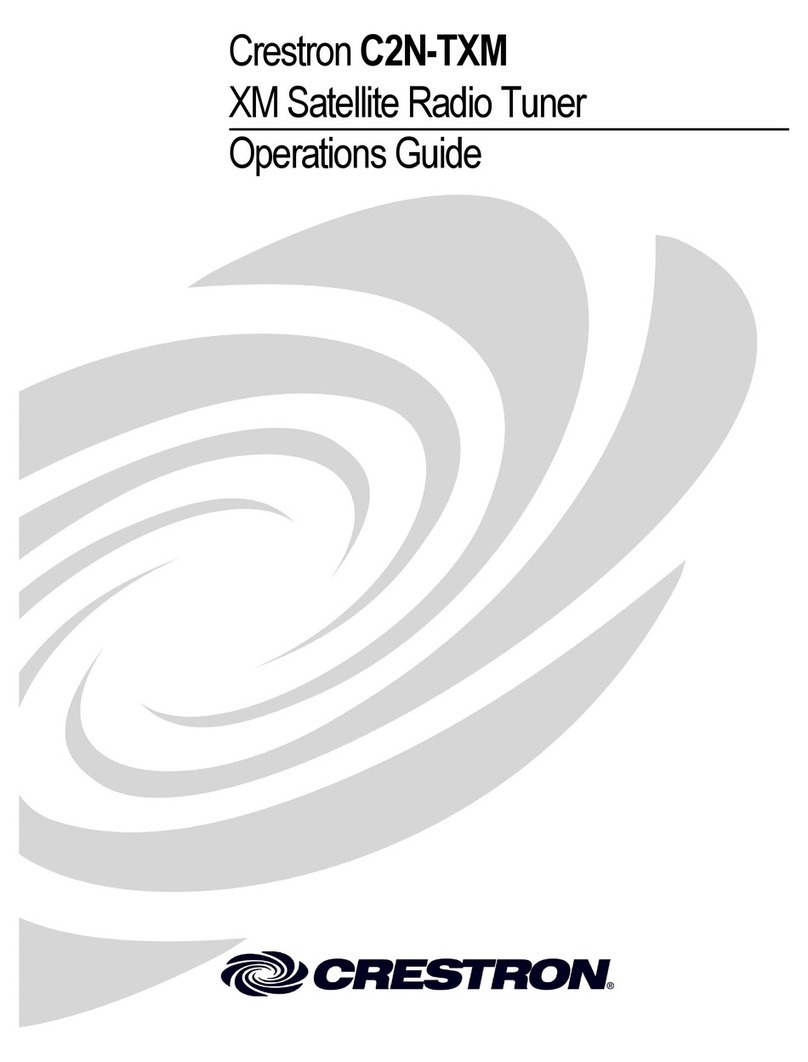
MFJ-962E Instruction Manual
2
Introduction
The MFJ-962E is a "T" network roller inductor tuner with built-in antenna switching, RF power
and SWR metering, and a 1:1 balun. The largest amplifiers that can safely be used include the
Heathkit SB-200 and 201, Collins 30L1, and Ameritron's ALS-600, ALS-606, and AL-811 series
of amplifiers. This tuner is designed for maximum RF output power levels of 800 watts carrier
or PEP on 80-10 meters, and 500 watts carrier or PEP on 160 meters. It is designed to match 50
ohm output amplifiers, transmitters or transceivers to virtually any antenna. Peak and average
forward power, reflected power, and SWR are displayed on the wattmeter's illuminated cross-
needle meter.
The MFJ-962E uses a roller inductor "T" matching network. It continuously tunes all
frequencies from 1.8 through 30 MHz. It will match dipoles, inverted-vee's, verticals, mobile
whips, beams, random wires, and many other antennas. The built-in balun will work with
balanced open wire, twinlead, or twin-axial feedlines.
An internal six position antenna-selector switch selects two separate coaxial line outputs, either
in tuned (with tuner's matching network in line) or direct (no matching circuit) configurations, a
balanced line or wire output, and a coax bypass position for accessories such as an external
dummy load. Long wire antennas can be connected to the WIRE terminal in the BAL.LINE
setting.
The antenna switching board uses nine 16A 1KV relays to switch the antennas. Note the tuner
requires 12V to operate which can come from the station power supply or one of the MFJ power
adapters.
Understanding Power Ratings
There are no standardized power rating systems for tuners. The names used (i.e. 3 kW Tuner)
carry over from the time when amplifiers were rated by peak power input, and not the true RF
power output. For example, the one thousand watt Johnson Matchbox was rated to handle a
1000 watt plate modulated AM transmitter (four kilowatts PEP transmitter input and 3000 watts
PEP RF output). The Heathkit SB-220 was called a two kilowatt amplifier, and the rated output
for SSB is approximately 1200 watts PEP and CW approximately 600 watts. Matching tuners
were called 2 kilowatt tuners, and these tuners safely handled 600 watts of CW power and 1200
watts PEP SSB.
The FCC has changed the power rating system of amplifiers a while back, and tuners no longer
follow amplifier power ratings. Most typical 1500 watt tuners remain able to safely handle 400-
600 watts CW, and 600-900 watts PEP SSB.
Load conditions and control settings also greatly affect the power handling capability of the
tuner. T-networks typically handle more power on higher frequency bands into higher load
impedances. The worst operating condition for T-network tuners are low impedance capacitive






